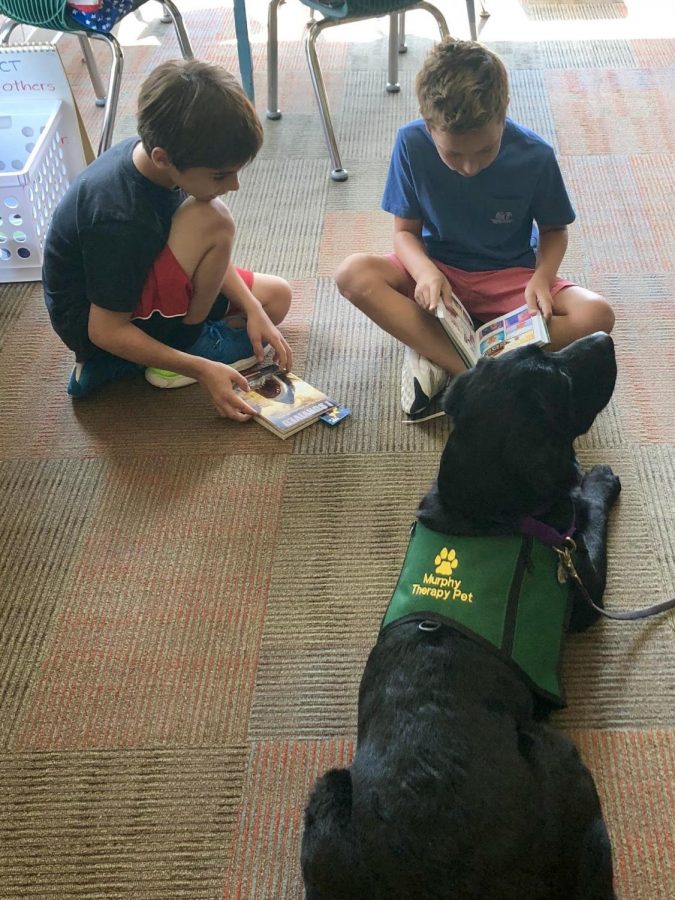Dogs bark up Maple Dale
FURRY FRIEND. Two Maple Dale students are reading to Murphy. One of the students is holding an “I survived book”, which he is going to read to Murphy. “My students were really sad to see Murphy leave our class but it did not change their behaviors. They were great Aviators and they went right back to work,” said Mrs. Carly Lefton, first grade teacher at Maple Dale.
Maple Dale welcomed their first service dogs Murphy and Tillie in September
According to Science Daily, a therapy dog is, “…a dog trained to provide affection and comfort to people in hospitals, retirement homes, nursing homes, mental institutions, schools, and stressful situations such as disaster areas.”
The dogs help students every Thursday, though there is only one dog at the school at a time because of their rotation schedule.
“At this time, we have two dogs that are part of the program, so they are on a rotation. Murphy comes every first and third week while Tillie comes every second and fourth week,” said Mrs. Mindy Zellner, Maple Dale assistant principal.
The dogs will visit classes and small groups. Students will be able to read to Murphy and Tillie and even walk them in the halls.
The idea of having a therapy dog in Maple Dale originated when Zellner brought her French Bulldog Hammie to school one morning. She saw how Hammie had such a positive effect on the students that it gave her the idea to bring therapy dogs to Maple Dale.
Over the years, healthcare professionals have noticed the therapeutic effect of animal companionship, such as relieving stress, lowering blood pressure, elevating moods, and the demand for therapy dogs continues to grow.
Yes, there are students who have allergies to dogs, but do not worry; Maple Dale has already thought of a way around the dilemma.
“The school contacted the families of students with allergies to dogs prior to the first visit and asked them how they would like to us to handle this with their child.
“All but one family made the decision to have the child participate in the program, with a few extra steps including washing hands after petting the dog, wiping down the desk, et cetera” Zellner said.
Dogs can also help children with autism in many ways.
Physically, children with autism have been reported to have a better use of language as well as being more social when their therapy sessions involved animals compared to standard therapy sessions without animals.
Mentally, many autistic children feel a deep bond with animals and feel that they are able to relate to them better than to humans.
Participants enjoyed the therapy sessions and felt the atmosphere of the session was less stressful during animal-assisted therapy.
Therapy dogs help mentally because humans interacting with animals have found that petting the animal promoted the release of serotonin, prolactin and oxytocin- all hormones that can play a part in elevating moods.
Overall, the arrival of Murphy and Tillie will be a big change at Maple Dale Elementary and students will just have to see what happens next with Maple Dale’s furry companions.
Sources:
- https://www.sciencedaily.com/terms/therapy_dog.htm
- https://www.uclahealth.org/pac/animal-assisted-therapy
- https://www.youtube.com/watch?v=bmbrSZXqGGE
Your donation will support the student journalists of Sycamore High School. Your contribution will allow us to purchase equipment and cover our annual website hosting costs.







